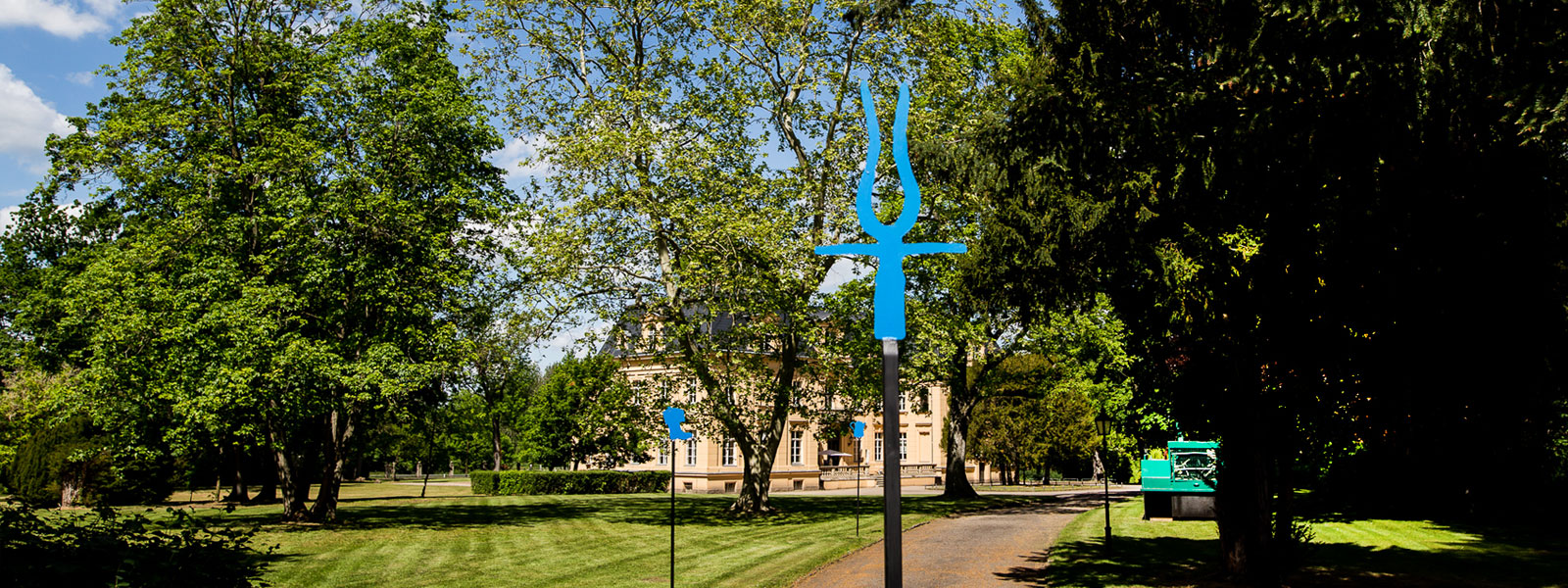
The Altranfter Schlosspark is a gem of Brandenburg landscape architecture.
It was created in the 19th century in the time of the Counts of Hacke and is preserved and maintained to this day as a valuable garden monument. You can visit and enjoy it even on days when the museum is closed. Some museum objects - from the cabbage digger to the open-air exhibition - outline the thematic range of the museum.
We have begun to carefully renew the tree population on the basis of a monument preservation objective. We would like to thank our tree sponsors for their donations:
Kai Herrmann, Reinhard and Monika Kampmann, Tobias Seyfarth, Uwe Bahr, Danny Lenz, Evelyn Faust, Kenneth Anders, Marco Büchel, City of Bad Freienwalde, Paul-Erik Lipinski, Ingrid Neumann, Lars Fischer
Archive
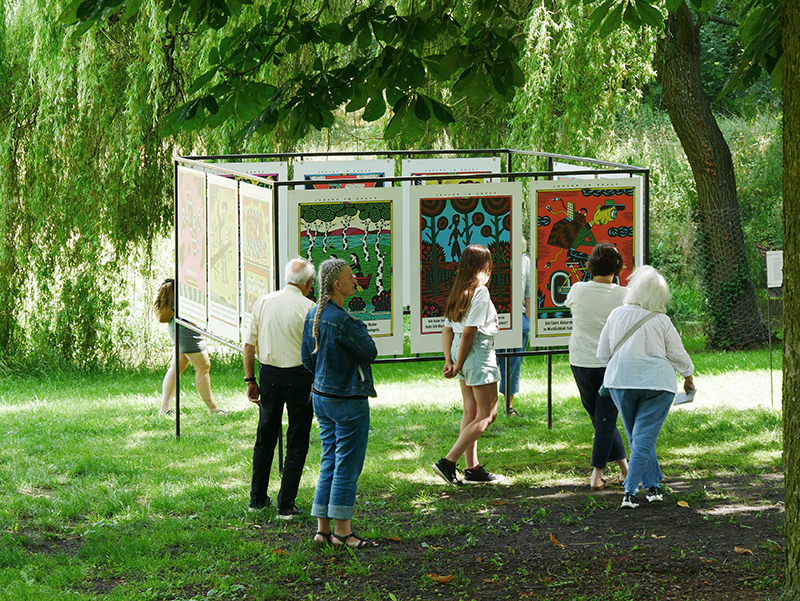

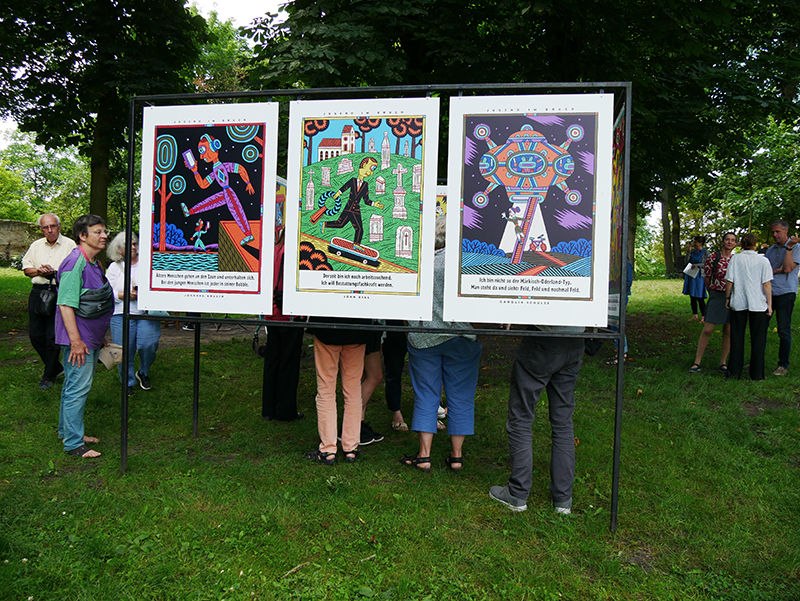
2023 - Henning Wagenbreth - Youth in the breach
Berlin graphic artist Henning Wagenbreth drew 24 pictures on the annual theme of youth - one for each of our interviews, witty, serious, investigating the diverse reports. They could be found as small screen prints in the museum's exhibition tour. They could be viewed on large panels in the castle park in 2023-25. You can find an impression here.
2022 - Flower strips
For the annual NATURE theme, the NABU Oberbarnim regional group created two flower strips in the castle park and at the Fischerhaus as an exhibit. Today, cultivation, care and use are creating increasingly sterile structures on fields and meadows as well as in settlements and gardens. Flower strips cannot solve this problem, only alleviate it somewhat. They are one piece of the puzzle of many necessary measures to enhance our landscape. The area contained, among others: Field bellflower, field widow flower, cowslip, true barbara, true motherwort, true St. John's wort, true bedstraw, yellow ragwort, common yarrow, common chicory, common dodder, common viper's bugloss, common cinquefoil, common thyme, Carthusian pink, small-flowered mullein, cornflower, agrimony, musk mallow, nettle-leaved campion, peach-leaved campion, red campion, black campion, silver cinquefoil, scabious campion, dove scabious, woodland cicely, white bedstraw, meadow daisy, meadow sage and wild carrot. The species composition changes over time.
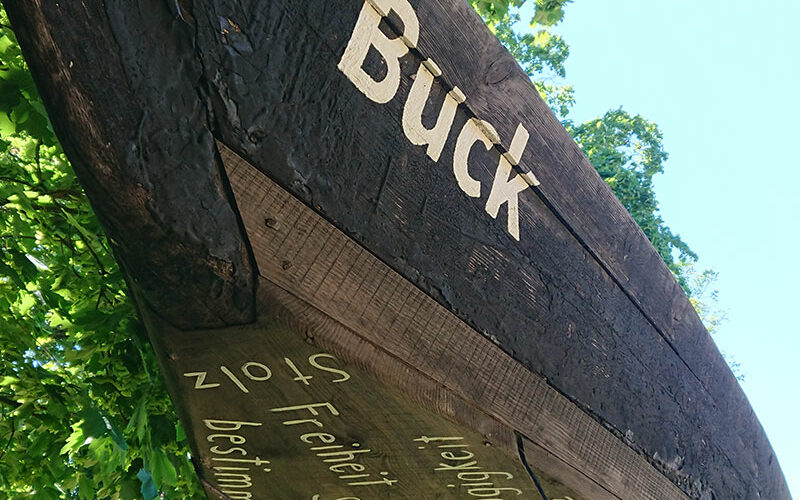
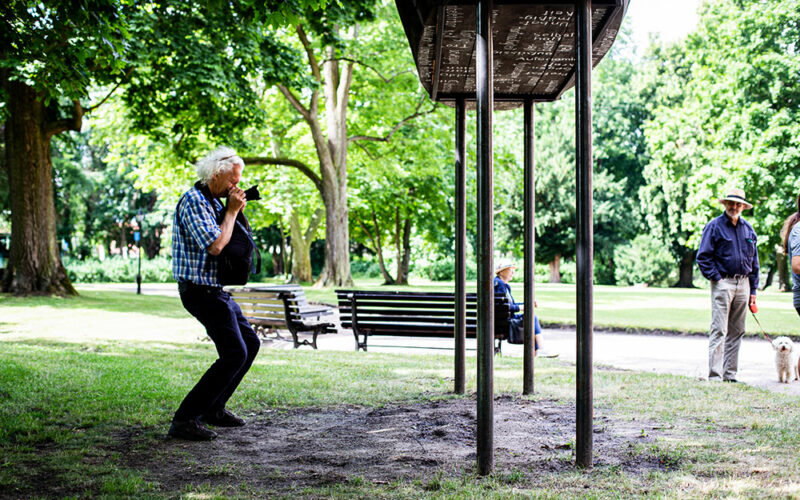
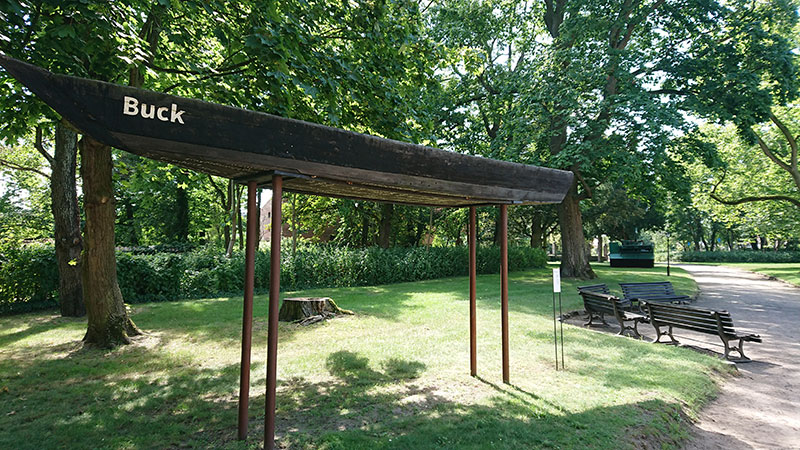
2021 - Boat of stubbornness
BUCK can be read on the boat - the old word in Oderbruch-Platt for stubbornness, an outstanding characteristic of rural areas. The boat is an old fishing boat, carefully restored by Reinier Scheers and placed on stilts by our janitors. There are many terms on the underside that can be associated with the annual theme of OWNERSHIP.
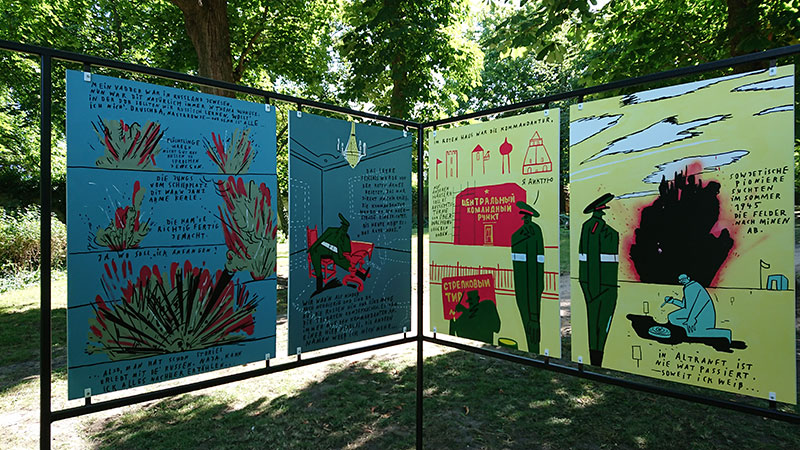
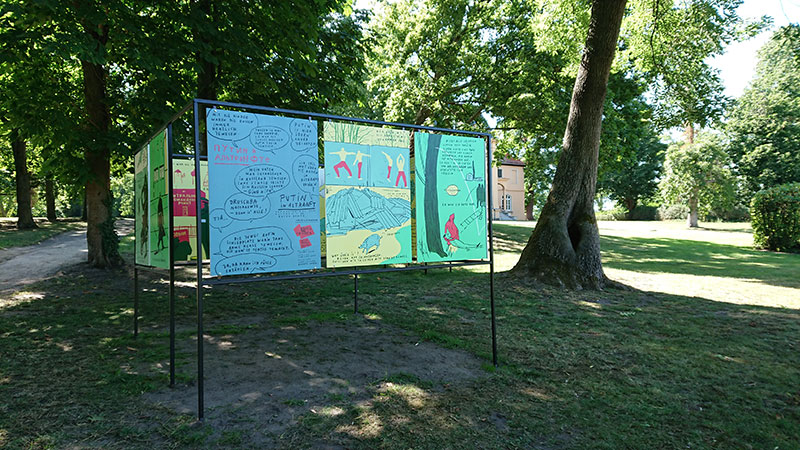
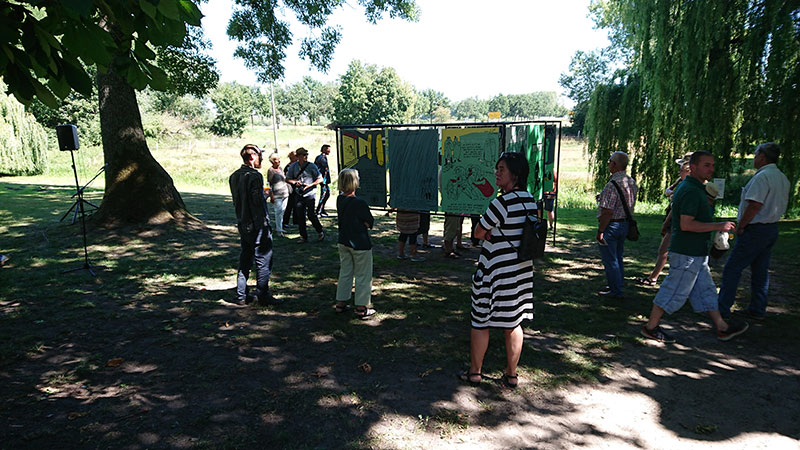
2020 - Putin in Altranft - the Soviet army in a village
Under the joint heading "Altranft between War and Peace" we present two art projects as part of Kulturland Brandenburg 2020 - War and Peace: With "Putin in Altranft," the Oderbruch Museum, together with the draftswoman Johanna Benz, is devoting itself to memories of the presence of the Red Army in Altranft from the immediate post-war period until the withdrawal of Soviet forces in the early 1990s. In the castle park, 22 drawings will be on display in an exhibition.

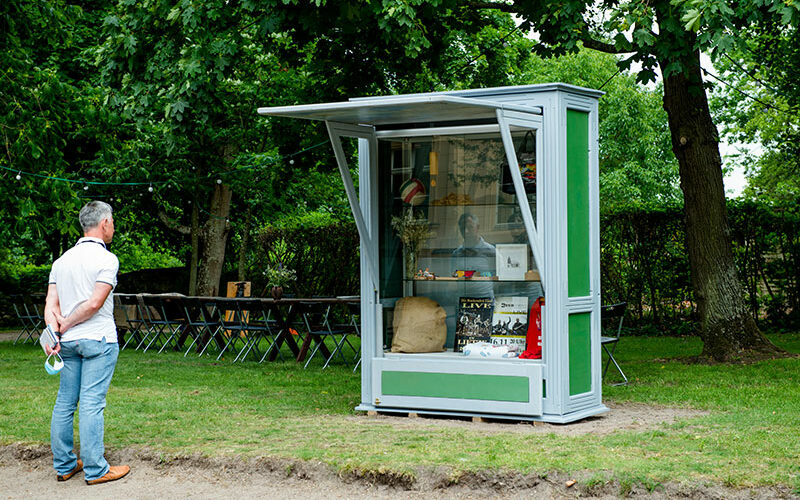
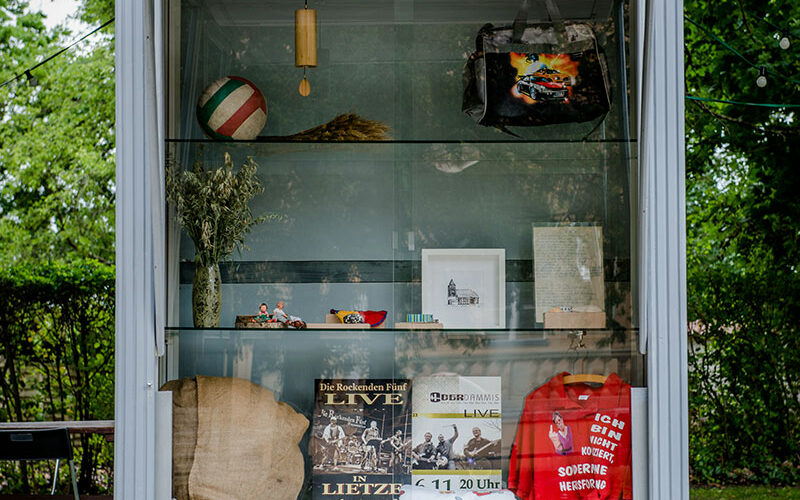
2020 - the fixed cabinet by Antje Schiffers
With "Three Celebrations and a Closet for a Year," Antje Schiffers designed the main artistic project for the annual theme PEOPLE at the Oderbruch Museum. She accompanied many of the interviews in which men and women were asked about their commitment to the community, from a wide variety of professions, at different ages, each in their own way. With each one, she found an object that could be used to tell a story - about the lender, but also about the joys and pitfalls of community service.
For these objects she built a fixed cabinet for the park with the Altranfter Tischer Hannes Grap, which was opened every morning and closed every evening.
As the number of objects in the cabinet grew, so did the film that told about them. This film was shown on a screen, about 100 meters opposite the fixed cabinet, in the castle. Here, specially designed tablecloths with Oderbuch motifs also lay waiting to be used; for they were used to set tables at which people celebrated together in the summer at specially arranged banquets.
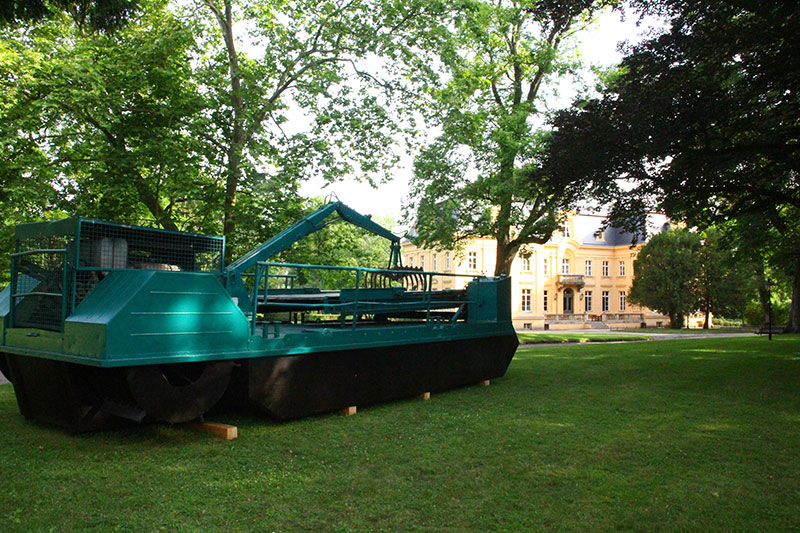
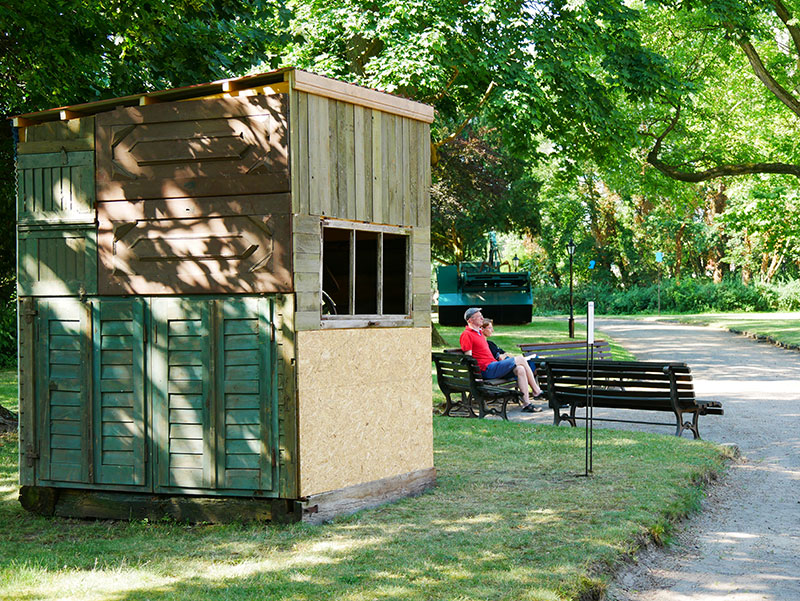
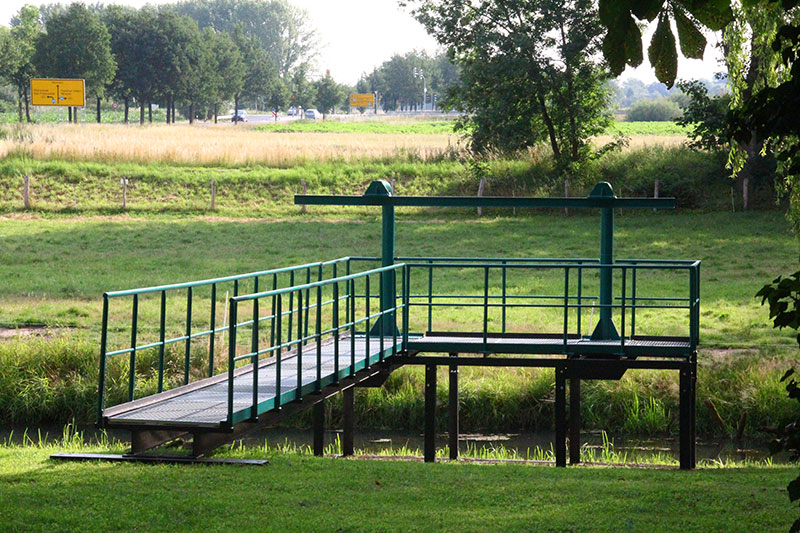
2017 to date: objects in the castle park
Since 2017, large objects related to the annual themes have been on display in the castle park. The most striking object is still the large haulm dredger, which the Water and Dike Association set up for the annual theme of water. At that time, it supplemented the objects with a former wheelhouse including electrical equipment, a push barge for material transport on waterways, a 100-year-old pump of a pumping station and an impressive working jetty of a pumping station.
The Krautbagger remained, but in the following years objects or works of art matching the new annual themes were exhibited - for example a do-it-yourself shed (erected by our janitor Jürgen Neumann), a rubble slide or an old fishing barge, which with the inscription BUCK (Oderbuchplatt for obstinacy) became the outdoor object for our annual theme EIGENSINN, which can still be seen in the park today.
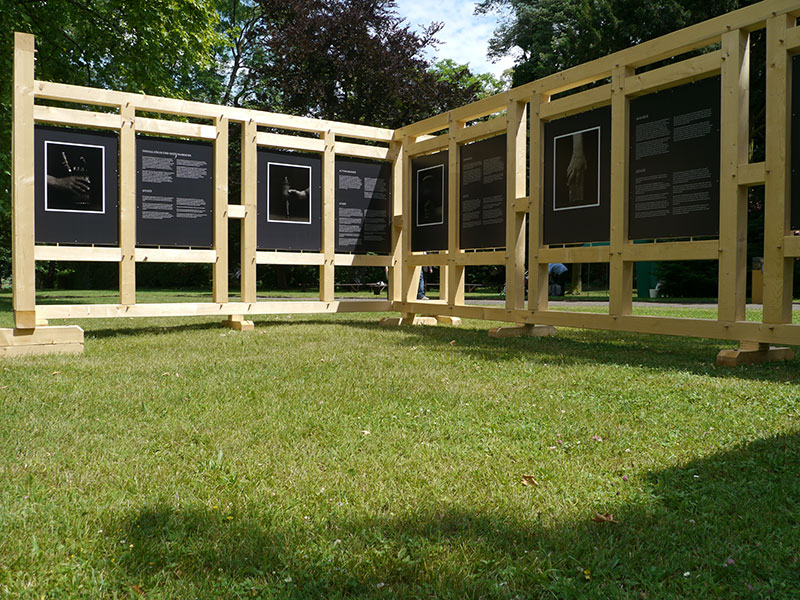
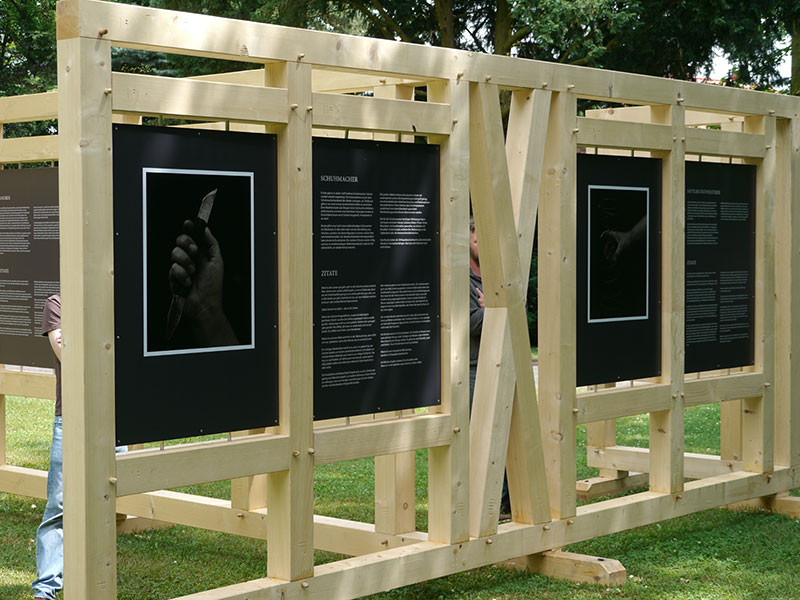
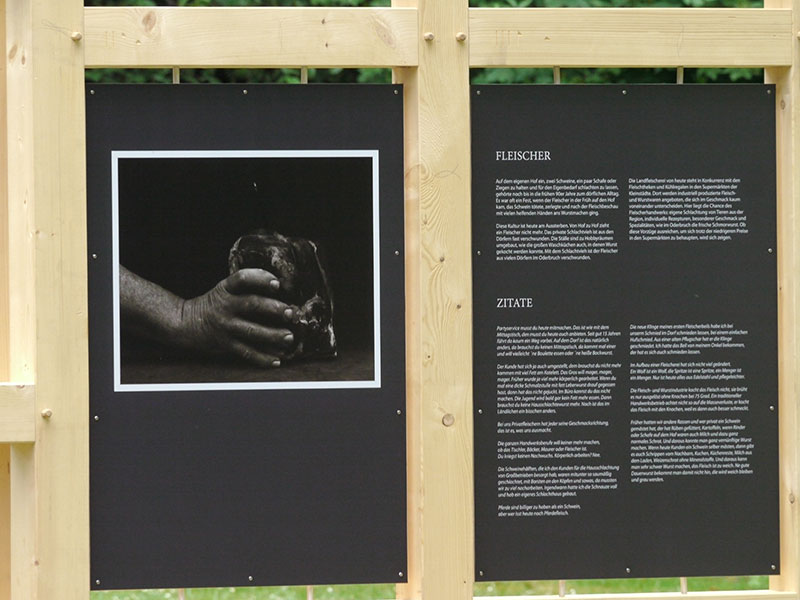
2016: a craftsman's house for Altranft
2016 was the first year of the Oderbruch Museum. We participated with our annual theme in the call of Kulturland Brandenburg "handwerk - zwischen gestern & übermorgen". The "craftsmen's house for Altranft" in the project idea of Lars Fischer and the conception of Barbara Anders was created with local carpenters in the castle park and was at the same time a carrier for the contents of our own annual theme: photographs of craftsmen's hands, tools and materials and texts from the interviews with over 30 craftsmen from the Oderbruch. Among them were building trades, the food craft, but also professions that are dying out in our region, such as saddler, blacksmith, basket maker or shoemaker.
The half-timbering was later dismantled and then reassembled in the form of a house on the quarry field in front of the castle. It serves there as a reference object to the museum. The photographs and quotes of the craftsmen can be seen in the forge yard at Schneiderstraße 18.